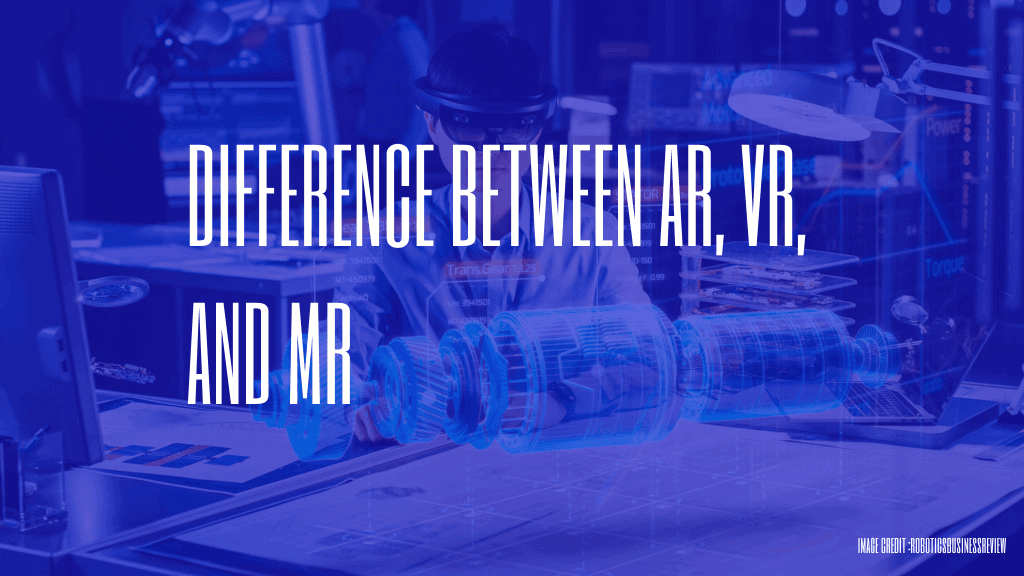Table of Contents
Virtual Reality (VR), Augmented Reality (AR), and Mixed Reality (MR) are three of the most popular immersive technologies available today. While all three involve the use of computer-generated content, there are fundamental differences between them. In this blog, we’ll explore the differences between VR, AR, and MR.
What is immersive technology?
To put it in a nutshell, immersive technologies create or extend reality. And this is done by immersing the user in a digital environment having applications in different domains. This technology is gaining momentum with every passing day and hour, transforming and helping us reimagine the future. Watch this video to understand what these technologies actually are and how they are useful.
Sometimes people feel it difficult to understand the difference between AR, VR, and MR. This article helps you to understand the basic difference between these technologies.
What is Augmented reality ?
Virtual Reality (VR) is a technology that creates a simulated environment that users can interact with using a headset or other similar devices. The technology uses computer-generated content to create a completely immersive experience for the user. The user is transported to a different world and can interact with the environment as if they were actually there.
VR is mainly used for gaming, but it has other applications such as in healthcare, education, and training. It provides a safe and controlled environment for users to practice complex procedures or operations. VR can also be used for training in hazardous environments or dangerous situations where safety is a concern.
What is Virtual reality ?
Virtual Reality (VR) is a technology that creates a simulated environment that users can interact with using a headset or other similar devices. The technology uses computer-generated content to create a completely immersive experience for the user. The user is transported to a different world and can interact with the environment as if they were actually there.
VR is mainly used for gaming, but it has other applications such as in healthcare, education, and training. It provides a safe and controlled environment for users to practice complex procedures or operations. VR can also be used for training in hazardous environments or dangerous situations where safety is a concern.
What is Mixed Reality?
Mixed Reality (MR) is a technology that combines elements of VR and AR. MR creates a hybrid environment that blends the real world and virtual world. Unlike AR, which overlays digital content on top of the real world, MR creates a new environment that users can interact with.
MR is used mainly in industrial and engineering settings for visualization and design purposes. MR can provide a detailed representation of complex machinery or structures, allowing engineers and designers to visualize and manipulate them in a virtual environment.
What is Extended Reality?
Extended Reality (XR) is an umbrella term that covers all of the various technologies that enhance our senses, whether they’re providing additional information about the actual world or creating totally unreal, simulated worlds for us to experience. It includes Virtual Reality (VR), Augmented Reality (AR) and Mixed Reality (MR) technologies.
Imagine you’re wearing a pair of XR glasses that use MR technology. You walk into a room and the glasses project a virtual object, such as a coffee mug, onto a real-world table. The object appears as if it’s really there, but you can still see and interact with the real table underneath it. As you reach out to touch the virtual mug, your hand passes through it and you realize that it’s not actually there.
Then, as you move around the room, the XR glasses track your movements and adjust the position of the virtual mug in real-time, making it appear as if it’s really part of the environment. This is an example of how Extended Reality can be used to create immersive experiences that blend the virtual and real worlds together.
Video from Simplilearn
Conclusion
In conclusion, Virtual Reality (VR), Augmented Reality (AR), and Mixed Reality (MR) are three distinct immersive technologies. VR creates a completely simulated environment, while AR overlays digital content on the real world environment. MR, on the other hand, combines elements of VR and AR to create a hybrid environment that blends the real world and virtual world. Each of these technologies has its unique applications, and understanding the differences between them is essential for choosing the right technology for a particular task or project.
